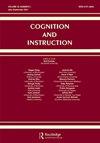Revisiting Lexington Green: Implications for Teaching Historical Thinking
IF 2.3
1区 心理学
Q2 PSYCHOLOGY, EDUCATIONAL
引用次数: 5
Abstract
Abstract After three decades of scholarship describing why and how students ought to be taught to think historically, this study asks what happens when they are. Ten high school students from a school that incorporated historical thinking into all history coursework repeated the think-aloud task from Wineburg’s 1991 study of the cognitive processes underlying the evaluation of historical evidence, reading eight documents with conflicting accounts of the Battle of Lexington. As a cohort, these contemporary students corroborated, sourced, and contextualized more frequently than their 1991 counterparts, despite representing a greater range of overall academic ability. The increase in historical reading did not, however, unambiguously demonstrate a change in their historical thinking. Students tended to source using a binary rating of either reliable or unreliable, corroborate pairs of documents rather than consider how all eight documents in the set created a narrative, and rely upon their ability to recall content information to contextualize. Their performance suggests that they have learned the process of historical thinking without taking up the underlying epistemology. These less sophisticated reading moves raise questions about how well the predominant model for historical thinking in the United States inspires and reflects students’ epistemological growth and suggests that there may be a need to revisit how available professional development, educative materials, and research help educators teach historical thinking.再访列克星敦格林:对历史思维教学的启示
摘要经过三十年的学术研究,描述了为什么以及如何教会学生进行历史思考,这项研究询问了当他们进行历史思考时会发生什么。来自一所将历史思维纳入所有历史课程的学校的十名高中生重复了怀恩堡1991年研究历史证据评估的认知过程中的大声思考任务,阅读了八份关于列克星敦战役的相互矛盾的文件。作为一个群体,这些当代学生比1991年的同龄人更频繁地证实、来源和情境化,尽管他们的整体学术能力范围更广。然而,历史阅读量的增加并没有明确地表明他们的历史思维发生了变化。学生倾向于使用可靠或不可靠的二元评级来寻找来源,证实成对的文档,而不是考虑集合中的所有八个文档是如何创建叙事的,并依赖于他们回忆内容信息的能力来情境化。他们的表现表明,他们学习了历史思维的过程,而没有涉及潜在的认识论。这些不太复杂的阅读动作引发了人们的疑问,即美国主要的历史思维模式在多大程度上激发和反映了学生的认识论成长,并表明可能有必要重新审视现有的专业发展、教育材料和研究如何帮助教育者教授历史思维。
本文章由计算机程序翻译,如有差异,请以英文原文为准。
求助全文
约1分钟内获得全文
求助全文
来源期刊

Cognition and Instruction
Multiple-
CiteScore
7.90
自引率
12.10%
发文量
22
期刊介绍:
Among education journals, Cognition and Instruction"s distinctive niche is rigorous study of foundational issues concerning the mental, socio-cultural, and mediational processes and conditions of learning and intellectual competence. For these purposes, both “cognition” and “instruction” must be interpreted broadly. The journal preferentially attends to the “how” of learning and intellectual practices. A balance of well-reasoned theory and careful and reflective empirical technique is typical.
 求助内容:
求助内容: 应助结果提醒方式:
应助结果提醒方式:


